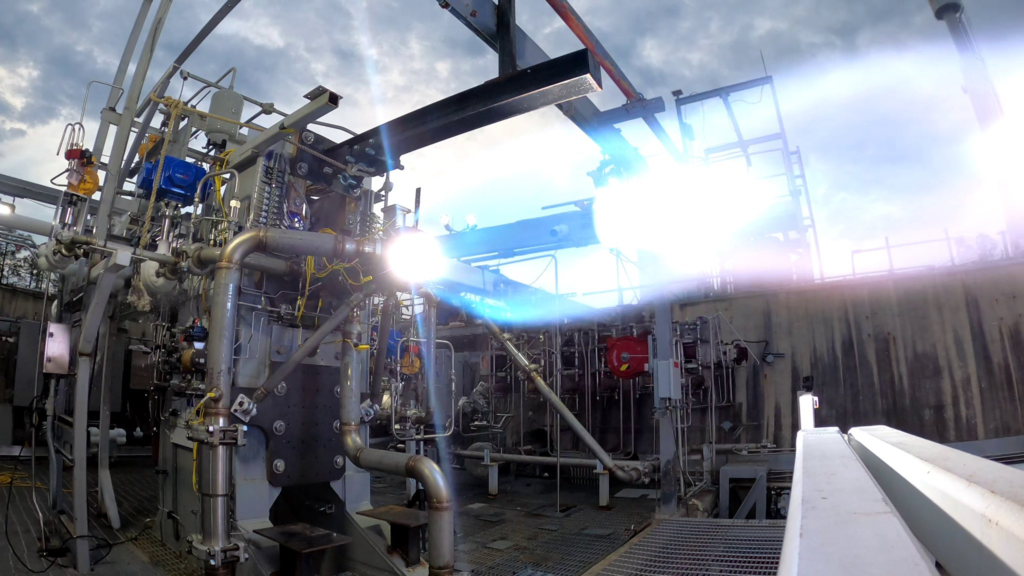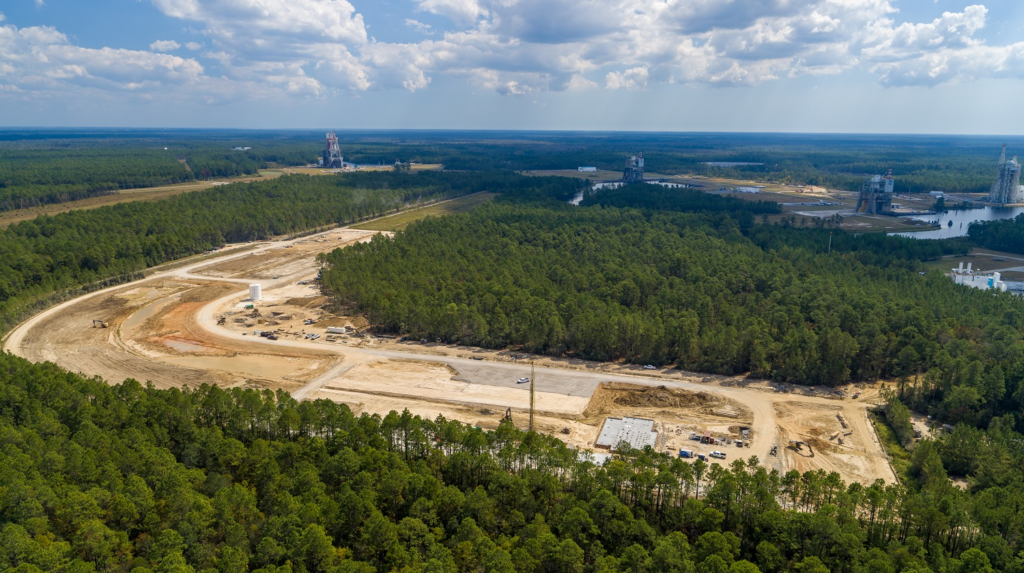
Relativity Announces New Terran R Facilities, Engine Progress, & More
Relativity Space has some very ambitious future plans including missions to Mars and beyond. While right now the company is about to launch Terran 1 for the first time, they are also ramping up progress on Terran R. This next generation launch vehicle is not only 3D printed as well, but also fully reusable, and much bigger.
In the last couple of weeks, Relativity has shared a few big updates regarding this rocket’s future test facilities, engines, structure, and more. All of which have a significant impact on the development and eventually its first launch. For example, they recently announced an expansion of facilities at Stennis Space Center in a new partnership agreement that focuses on 153 acres.
Not to mention, a host of different test results and important milestones with the Aeon R engine. For years now Relativity Space has been working to completely reinvent the rocket manufacturing process. If successful, launch vehicles including Terran R and Terran 1 could end up being much more capable than expected. Here I will go more in-depth into some of the recent updates, what to expect in the future, a closer look at Terran R, and more.
Aeon R Progress

In just the last week, Relativity and CEO Tim Ellis have shared a bunch of new Terran R information and progress. The first has to do with the Aeon R engine. Specifically, Terran R will rely on 7 Aeon R engines on the first stage to provide the majority of the rocket’s thrust. On October 11th Tim Ellis tweeted saying, “New Aeon R hardware milestone: first successful test of a subscale (approx 50k lb thrust) injector + calorimeter. Much higher power density and efficiency architecture. At full this article will be about 2x the thrust of Aeon 1 (at subscale; full is 250k lbf). Major step!” This included multiple images of the engine’s static fire. He continued on to clarify that subscale and calorimeter testing specifically helps them characterize this new injector and map the heat transfer characteristics for future regen channel design, and get early performance indicators ahead of full scale hardware that is in manufacture now (and partially complete). He also pointed out that getting to the first ignition is a great step, and that they plan to ramp up from here to longer duration and power.
In addition, just two days ago he tweeted mentioning, ““my favorite shade of blue” – @relativityspace test team. Continue ramping duration and power on Aeon R subscale, incredible pace.” Once again he provided more images from the continued testing of Aeon R. Its important to point out that these engines are 3D printed, meant to enhance mission reliability by reducing part count in engine combustion chambers, igniters, turbopumps, reaction control thrusters, and vehicle pressurization systems. Not to mention, all Aeon engines use liquid oxygen and liquid natural gas as propellants, which are not only one of the best for rocket propulsion, but also the easiest to eventually make on Mars. While this wrapped up the recent updates on Terran R’s future engine, the company had other big news regarding this next generation launch vehicle.
New Terran R Facilities

On October 18th Relativity Space released a major update in a tweet highlighting, “Oh yes, we did. Today we announced a 150+ acre expansion at our @NASAStennis Space Center facilities! The land will be home to a new test complex for Aeon R engine testing and Terran R stage testing.” Through an agreement with NASA, Relativity is significantly expanding its facilities and infrastructure at NASA’s historic Stennis Space Center in Hancock County, Mississippi. In regards to this deal, Tim Ellis shared, “We’ve been working secretly in the background on this expansion for some time – now with start of Aeon R program test campaigns and many months into breaking ground here, announcing today.”
Relativity will utilize over 150 additional acres within the Stennis Test Complex, with testing infrastructure for its Aeon R engines being built from the ground up on previously unutilized land north of the A and E Test Complexes. Relativity has begun ground clearing work for several new engine test stands, a full scale second stage stand, office buildings, and a vehicle hangar. Some of which you can already see thanks to various images provided by Relativity. The company is already underway testing Aeon R components across Relativity’s E2 test complex, with plans to build the first Aeon R engine and turbopump assembly and begin thrust chamber assembly tests for its Aeon R engines in the coming months at a leased E1 test cell. Full Aeon R engine tests are set to occur in late 2023 at Relativity’s newly announced facility expansions.
Relativity currently occupies several operational facilities at Stennis, which include four exclusive-use test stands in the E4 area used for Terran 1 stage testing and Aeon 1 engine testing, two exclusive-use stands in the E2 area used for Aeon 1 engine and Aeon R component tests, and one cell on the E1 test stand available through a Reimbursable Space Act Agreement for Aeon R engine tests. Additionally, Relativity has expanded into several buildings that house its rapidly growing team and test control operations. These facilities have enabled more than 2,000 engine tests, multiple successful mission duty cycles, and a fully-integrated stage testing of a 3D printed orbital flight article – which is not only a first for Relativity but for the entire aerospace manufacturing industry.
Relativity’s partnership with NASA advances innovation, economic development, and job growth in the Gulf Coast, while also progressing the company’s leadership in American aerospace development. Relativity will continue to invest in regional workforce development programs, university and education outreach, and community engagement initiatives. At the time of the annocument, Tim Ellis commented, “We’re looking forward to writing some new history at Stennis through an incredibly large new expansion of development and test capabilities. We’re honored to partner with NASA and are grateful for their support. We look forward to growing our Stennis-based team, who will be pivotal in our success of meeting many more first-ever milestones as we scale our Terran R program.”
In addition, the Vice President of Test and Launch at Relativity pointed out, “The access to infrastructure in Mississippi is unparalleled. I look forward to working with NASA as the historic Stennis Space Center continues to evolve to support commercial space test programs and to attract and hire top talent as we build the future of aerospace manufacturing. We know the history of excellence at Stennis and take great pride in being able to repurpose existing infrastructure that has withstood the test of time. But we will also build brand new test stands in a place so central and vital to American aerospace innovation.”
Focusing back on the rocket itself, as a two-stage launch vehicle with a 5-meter payload fairing, Terran R will be entirely reusable and capable of launching 20,000kg to low Earth orbit. Terran R is made possible through the company’s proprietary 3D printing process, which utilizes software-driven manufacturing, proprietary, high-performance next generation materials, and unique design geometries that are not possible to achieve in traditional manufacturing. Combined with the ability to launch 20X more payload than Terran 1, Terran R is intended to provide both government and commercial customers affordable access to space, in LEO and beyond. With satellite technology advancements, demand for bandwidth soaring, and satellite constellations representing the largest part of the growing market, Terran R was accelerated to accommodate the growing demand for large constellation launch services, and the company’s growing pipeline of commercial interest. The recent engine progress and test facility announcements are a big deal as the rocket continues to develop and work toward its future launch contracts.
For example, not long ago Relativity signed a multi-year, multi-launch Launch Services Agreement with OneWeb, the global space-based communications company. Under the agreement, Relativity will launch OneWeb’s low Earth orbit (LEO) satellites on Terran R, starting in 2025. These launches will support OneWeb’s deployment of its Gen 2 satellite network, which will add capacity and fresh capabilities to build upon the initial constellation of 648 satellites the company is currently building out. Terran R will launch OneWeb missions from Launch Complex 16, Relativity’s site at Cape Canaveral Space Force Station. With the addition of its multi-launch agreement with OneWeb, Relativity has a total of five signed customers for Terran R, including multiple launches and totaling more than $1.2B in backlog. An ambitious goal that is not far away.
Conclusion
Even though Relativity Space is just months away from the first launch of Terran 1, they seem to be ramping up Terran R progress. Between a bunch of different Aeon R updates and the announcement of its new facilities, they are speeding up the rocket’s schedule. With the first launches scheduled not very far away, the company will need to continue down this path in order to be ready on time. We will have to wait and see how it progresses and the impact it has on the space industry.
